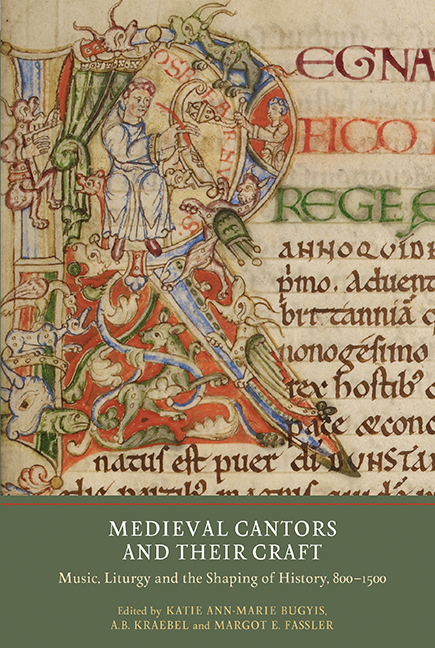Book contents
- Frontmatter
- Dedication
- Contents
- List of Illustrations
- Contributors
- Acknowledgments
- Abbreviations
- Miscellaneous Frontmatter
- Introduction
- PART I The Carolingian Period
- PART II The Eleventh Century
- 5 Adémar de Chabannes (989–1034) as Musicologist
- 6 Cantor or Canonicus? In Search of Musicians and Liturgists in Eleventh-Century Constance
- 7 Shaping the Historical Dunstan: Many Lives and a Musical Office
- 8 Female Monastic Cantors and Sacristans in Central Medieval England: Four Sketches
- PART III England in the Twelfth Century
- PART IV On the Continent: Five Case Studies
- Index of Manuscripts
- General Index
- Miscellaneous Endmatter
6 - Cantor or Canonicus? In Search of Musicians and Liturgists in Eleventh-Century Constance
from PART II - The Eleventh Century
Published online by Cambridge University Press: 25 October 2017
- Frontmatter
- Dedication
- Contents
- List of Illustrations
- Contributors
- Acknowledgments
- Abbreviations
- Miscellaneous Frontmatter
- Introduction
- PART I The Carolingian Period
- PART II The Eleventh Century
- 5 Adémar de Chabannes (989–1034) as Musicologist
- 6 Cantor or Canonicus? In Search of Musicians and Liturgists in Eleventh-Century Constance
- 7 Shaping the Historical Dunstan: Many Lives and a Musical Office
- 8 Female Monastic Cantors and Sacristans in Central Medieval England: Four Sketches
- PART III England in the Twelfth Century
- PART IV On the Continent: Five Case Studies
- Index of Manuscripts
- General Index
- Miscellaneous Endmatter
Summary
In seeking to understand the disposition of personnel within early medieval religious communities, we can do far worse than to consult the famous confraternity books of Carolingian Reichenau and Sankt Gallen. In the lands around Lake Constance, where the modern states of Germany, Austria and Switzerland now converge, groups of ninth-century monks assembled (and their successors expanded) extensive inventories of the members of other Christian communities, both living and departed. The purpose of these compilations was to faciliate networks of reciprocal intercession right across Europe, in locations as widely dispersed as Provence, Normandy, Saxony, Bavaria and Lombardy, and as far from Constance as Jerusalem. Many of the entries were also accompanied by the specific ranks of those for whom prayer was offered: not only the monks we might expect, but also monarchs, dukes and counts, laymen, doctors, nuns, anchorites, priests, deacons, archpriests, chancellors, chaplains, clerics, deans, priors, bishops, popes, patriarchs – and cantors.
Confraternity books are not especially informative, as it turns out, about the specific role of cantors within religious communities of this early period. But what they lack in historical insight they make up for in methodological counsel, because their pages exemplify an important point of ambiguity. When we encounter the individual Purchart, who is titled ‘can’, or the individual Ruadheri, titled ‘ca’, there is more than one possibility for the expansion of these respective abbreviations. Does ‘can’ refer to the high office of ‘cantor’, who, as later medieval descriptions tend to concur, took charge of music and liturgy within a given institution? Does it simply refer to the lowly rank of ‘cantor’, literally ‘singer’, to which young clerics were sometimes ordained prior to the traditional entry-level position of door-keeper? Or might it refer instead to a ‘canonicus’ (or ‘canon’), a member of a community of priests associated with a cathedral or collegiate church, whose coveted existence had a reputation – at least until the reform movements of the eleventh and twelfth centuries – as a sinecure for the sons of the nobility? I cite this point of confusion not as a challenge to existing readings of confraternity books, but as a cause for reflection in this important collection of cantor-historian studies. To what extent can we be confident that the ‘cantor’ we find documented in a particular historical source was always in a position of high authority?
- Type
- Chapter
- Information
- Medieval Cantors and their CraftMusic, Liturgy and the Shaping of History, 800-1500, pp. 103 - 124Publisher: Boydell & BrewerPrint publication year: 2017



